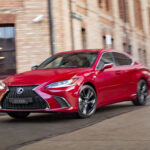Whilst BMW is today considered to be one of the finest marques, this was not always the case. In the 1920s BMW made aero engines and motorcycles before beginning licensed production of the Austin Seven in 1929. The company’s original design arrived in 1934 and two years later it established its credentials with the 328, which was probably the best all-round sports car of the day.
After World War II the firm’s major plant in East Germany was nationalised and eventually made the unloved Wartburgs. The Munich factory in West Germany survived many calamities – at one time its main model was the Isetta bubble car, built around a motorcycle design – but in the mid-1960s the foundations of BMW’s present success were laid with a series of well-made small saloons.
BMW’s first postwar design was a four-seater GT car, the 503, available also as a coupe or convertible and over the period 1956 to 1959, 413 cars were produced. This car was then joined by the 507 Sports which was based on the 503 but with the wheelbase shortened by 400mm and power increased from 104kW to 112kW without losing the excellent low-range torque. Like the 503, styling was carried out by Count Albrecht Goertz but with this model he showed fewer inhibitions in its design – BMW’s first postwar two seater looked equally good as a coupe or rag top convertible.
Just as today, BMW has always been strongly aware that Mercedes was its major opposition and these sophisticated V-8 powered cars were pitted against Mercedes in-line overhead-camshaft sixes. The 507 was offered as BMW’s answer to the Mercedes 300SL. BMW’s determined attempts to challenge Mercedes in the 1950s were financially disastrous and almost plunged the company into bankruptcy.
Top speed of the 507 was 200km/h and acceleration was excellent with 96km/h being reached in 8.8 seconds. When fitted with the highest rear axle ratio option top speed increased to 220km/h. The car had a floor mounted gear change, and the hydraulic brakes were servo-assisted. Although front wheel disc brakes were fitted to later models these were never catalogued. BMW played safe with carburettors whilst rival Mercedes cars had fuel injection.
In all, 253 examples of this marque were produced and, after a skirmish with a Bertone-bodied fixed-head development, BMW finally jettisoned their eight-cylinder line in 1965. The engine and gearbox from the 507 were also used by Lago-Talbot in its America’ model.
The 507 was the forerunner to BMW’s Z cars. The Z1, introduced in 1986, started life as a concept car but due to public demand ultimately became a production model. Extremely expensive, the Z1 was seen as poor value for money and production was ceased in 1991 after 8000 examples had been produced.











